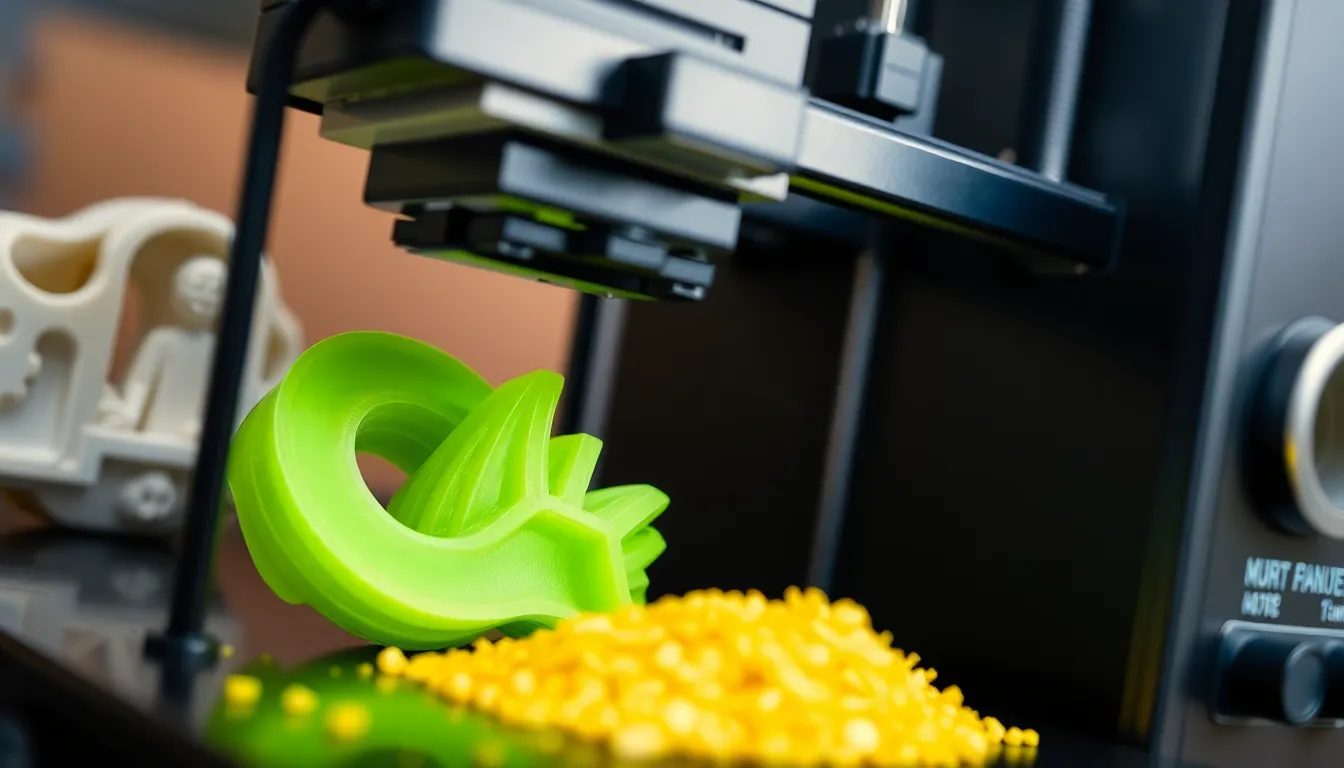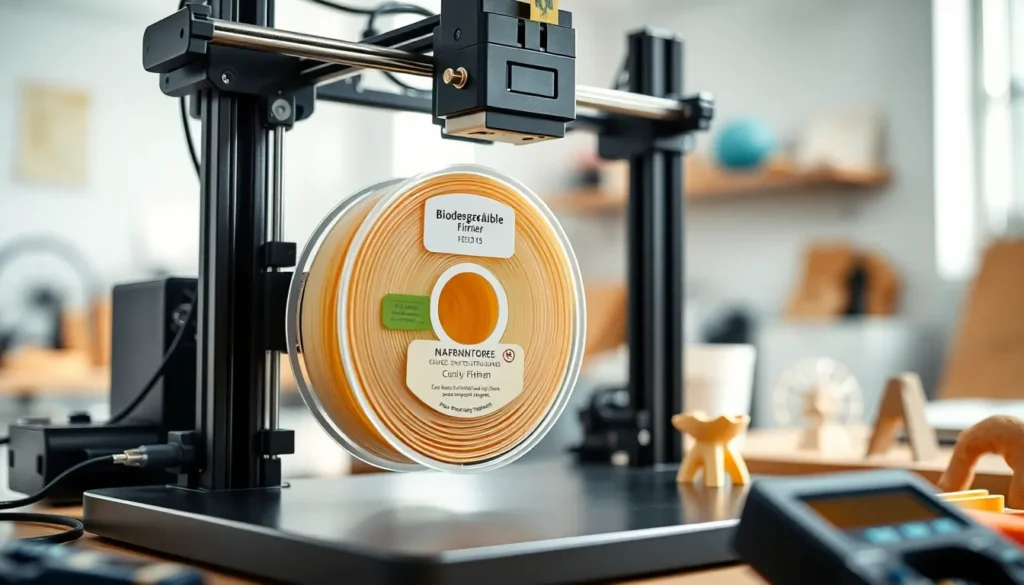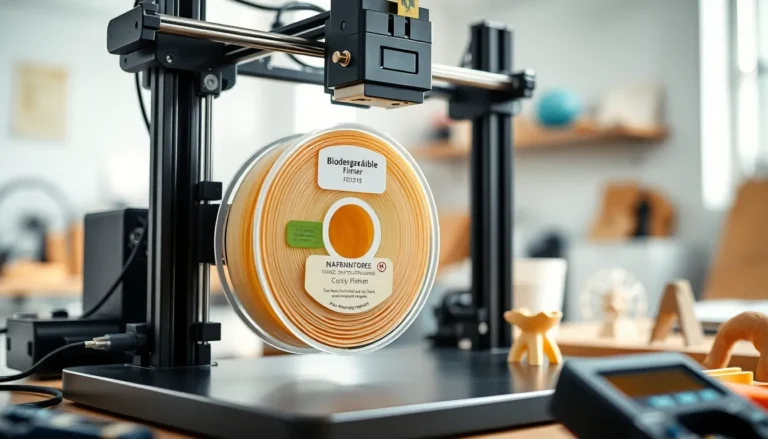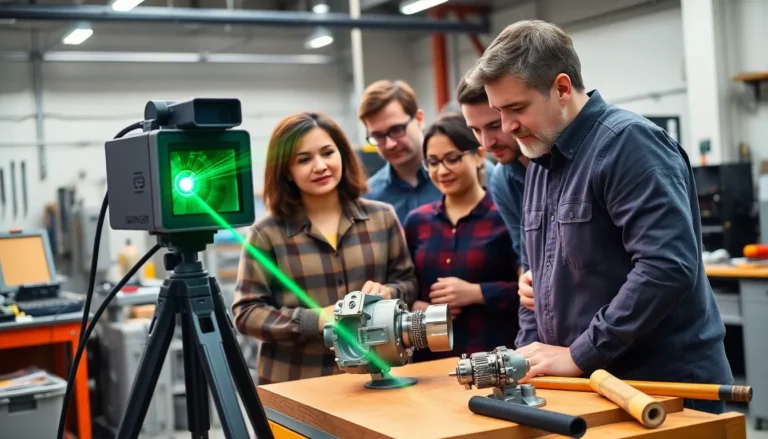The rise of 3D printing has revolutionized manufacturing, but it’s also brought environmental concerns to the forefront. As industries seek sustainable solutions, biodegradable 3D printing materials are emerging as a game changer. These innovative materials not only reduce waste but also offer a pathway to eco-friendly production processes.
Biodegradable filaments made from natural sources like cornstarch and other biopolymers are gaining traction among makers and manufacturers alike. They provide the same versatility and performance as traditional plastics while breaking down naturally, minimizing their impact on the planet. As the demand for sustainable practices grows, understanding the benefits and applications of these materials becomes crucial for anyone involved in 3D printing.
Table of Contents
ToggleOverview of Biodegradable 3D Printing Materials
Biodegradable 3D printing materials provide sustainable alternatives to traditional plastics. These materials undergo a natural degradation process, significantly reducing landfill waste and environmental impact.
Common biodegradable filaments include:
- PLA (Polylactic Acid): Made from renewable resources like cornstarch, PLA exhibits excellent printability and flexibility while retaining strength.
- PHA (Polyhydroxyalkanoates): Produced by microbial fermentation, PHA features biodegradability in various environments, including soil and marine settings.
- PBS (Polybutylene Succinate): This polymer offers a good balance of biodegradability and mechanical properties, making it suitable for various applications, including packaging.
These materials stand out for their performance and reduced ecological footprint. As manufacturers focus on sustainable production methods, the interest in biodegradable 3D printing materials continues to grow across industries. Since these materials are derived from natural sources, they contribute to a circular economy, minimizing reliance on fossil fuels.
Adoption of biodegradable 3D printing materials addresses environmental concerns while fulfilling the increasing demand for eco-friendly practices in the manufacturing sector.
Types of Biodegradable 3D Printing Materials

Biodegradable 3D printing materials encompass a range of substances designed to decompose naturally and lessen environmental impact. These materials vary in composition and properties, catering to different printing needs.
PLA (Polylactic Acid)
PLA stands out as one of the most popular biodegradable materials in 3D printing. It derives from renewable resources, primarily cornstarch or sugarcane, and offers excellent printability. PLA features low warping tendencies, making it ideal for beginners. Its biodegradability allows for decomposition in industrial composting facilities within 60 to 90 days. PLA’s tensile strength and stiffness make it suitable for a variety of applications, including prototypes and decorative items.
PHA (Polyhydroxyalkanoates)
PHA is another notable biodegradable option that developers increasingly turn to for its unique properties. Produced by microbial fermentation, PHA exhibits biodegradability in diverse environments, including soil and marine settings. This thermoplastic material presents higher flexibility and impact resistance compared to PLA, making it ideal for functional parts and items requiring durability. PHA typically decomposes within a few months under proper conditions, promoting its application in sustainable practices.
Benefits of Using Biodegradable Materials
Biodegradable materials offer significant advantages in 3D printing, particularly in reducing environmental impact and increasing application versatility. These benefits align with the growing demand for eco-friendly production methods.
Environmental Impact
Biodegradable materials, such as PLA, PHA, and PBS, undergo natural degradation processes, leading to less landfill waste. PLA breaks down within 60 to 90 days in industrial composting, significantly minimizing environmental footprints. PHA decomposes in soil and marine environments, enhancing biodegradability. These materials reduce plastic pollution, contributing to healthier ecosystems and lower carbon emissions during production compared to conventional plastics.
Application Versatility
Biodegradable 3D printing materials provide versatility across various applications. PLA excels in producing prototypes and decorative items due to its excellent printability and flexibility. PHA’s superior impact resistance makes it suitable for functional parts requiring durability. PBS offers a balance of mechanical properties, accommodating diverse applications in industries like packaging and consumer goods. This adaptability demonstrates that sustainable materials can meet various manufacturing needs without compromising performance.
Challenges in Biodegradable 3D Printing
Biodegradable 3D printing materials present several challenges that can affect their overall effectiveness and usability in manufacturing applications.
Material Limitations
Biodegradable materials often exhibit limitations that can hinder their performance in 3D printing. PLA, for instance, demonstrates brittleness, particularly in thin-walled structures, which may lead to mechanical failure under stress. PHA tends to be more expensive than traditional plastics, which can impact its adoption in cost-sensitive markets. PBS, while flexible, may not deliver the same strength as petroleum-based alternatives, limiting its application in demanding environments. Additionally, the moisture sensitivity of these materials creates storage and handling challenges, often requiring specific conditions to maintain optimal performance characteristics.
Printing Process Considerations
The printing process for biodegradable materials requires careful attention to parameters. Temperature settings vary among materials; PLA typically prints at lower temperatures, while PHA and PBS need higher settings to ensure proper flow and adhesion. Print speed also influences quality; slower speeds may enhance detail but lengthen production times. Furthermore, the adhesion of biodegradable filaments to the print bed varies, with some materials necessitating heated beds or specialized surfaces to minimize warping and enhance layer bonding. These factors collectively require users to adapt their printing techniques, which can complicate the transition from conventional to biodegradable materials.
Future Trends in Biodegradable 3D Printing Materials
Advancements in biodegradable 3D printing materials lead to significant trends shaping the future of the industry. Enhanced formulations are emerging, designed to improve performance and expand applications. Material scientists are exploring hybrid compounds that combine biodegradable elements with traditional plastics, creating materials that offer increased durability while retaining environmental benefits.
Sustainability initiatives drive innovation, as manufacturers seek eco-friendly alternatives. Companies are focusing on sourcing feedstocks from agricultural waste and by-products, further reducing environmental impact. This shift emphasizes a circular economy model where waste is minimized, and resources are reused.
Regulatory pressure influences the trend towards biodegradable solutions. Governments increasingly impose measures to reduce plastic use, boosting demand for sustainable materials in various sectors, including automotive and packaging. As entrepreneurs recognize this opportunity, new startups are entering the biodegradable materials market, enhancing competition and innovation.
Consumer awareness impacts trends as well. As eco-consciousness rises among consumers, the preference for sustainable packaging and products increases. Producers respond by offering biodegradable options, knowing that aligning with consumer values reinforces brand loyalty.
Research institutions play a crucial role in developing new biodegradable materials. Collaborative efforts between academia and industry foster breakthroughs that enhance material properties. Those advancements ensure that biodegradable filaments maintain compatibility with existing 3D printing technologies while improving thermal and mechanical characteristics.
The future of biodegradable 3D printing materials reveals a landscape filled with innovation, sustainability, and shifting consumer preferences. The ongoing development of these materials promises enhanced performance and greater application versatility while addressing significant environmental challenges.
The rise of biodegradable 3D printing materials marks a significant step toward sustainable manufacturing. As awareness of environmental issues grows, these materials provide a viable alternative to traditional plastics. Their ability to reduce landfill waste and lower carbon emissions makes them an attractive option for eco-conscious consumers and industries alike.
With advancements in technology and material science, the future looks promising for biodegradable filaments. Innovations will likely enhance their properties and expand their applications, further integrating them into various sectors. As the industry continues to evolve, embracing these sustainable practices will play a crucial role in shaping a greener future for 3D printing.




